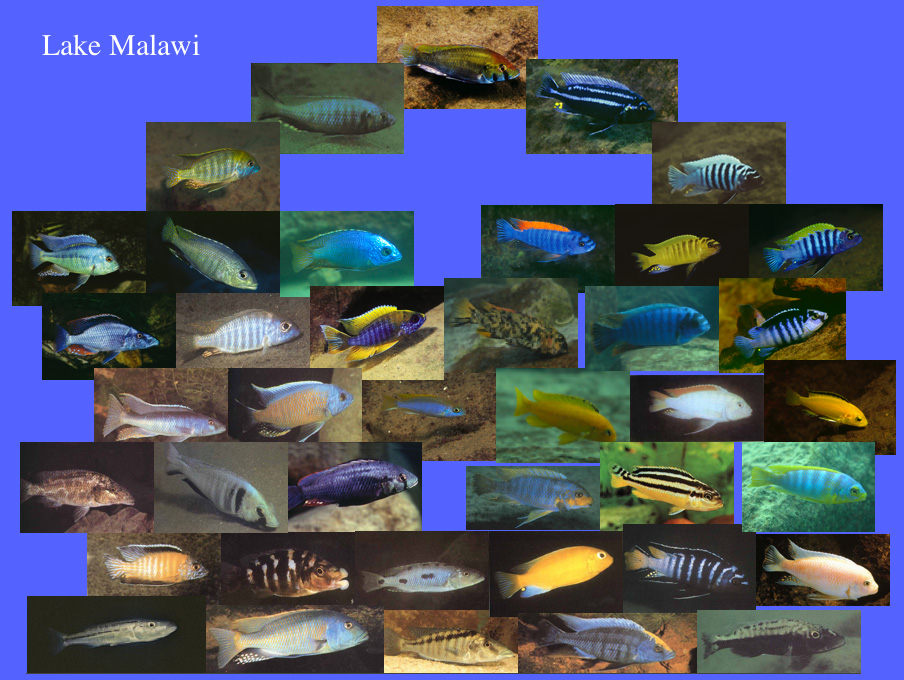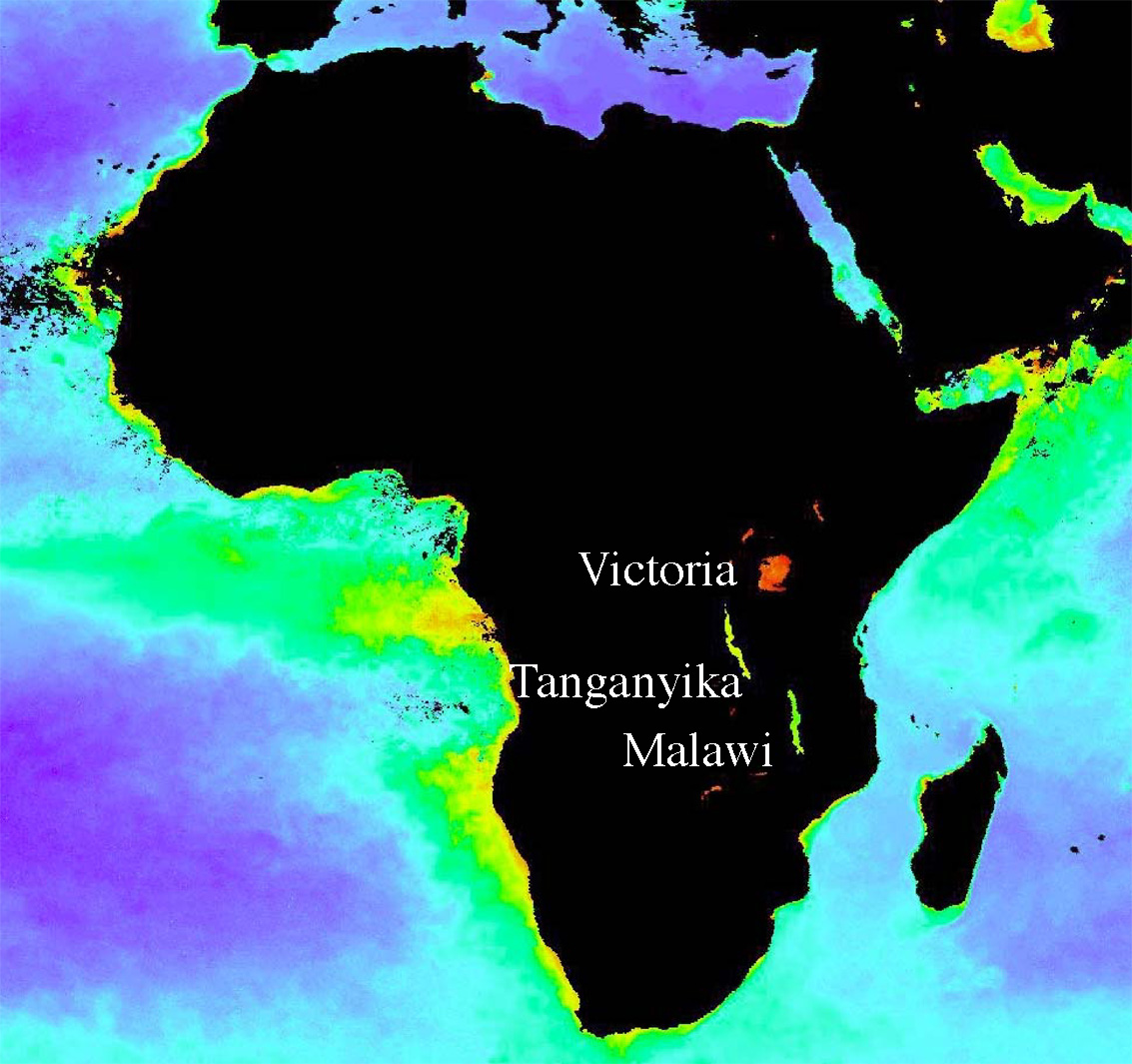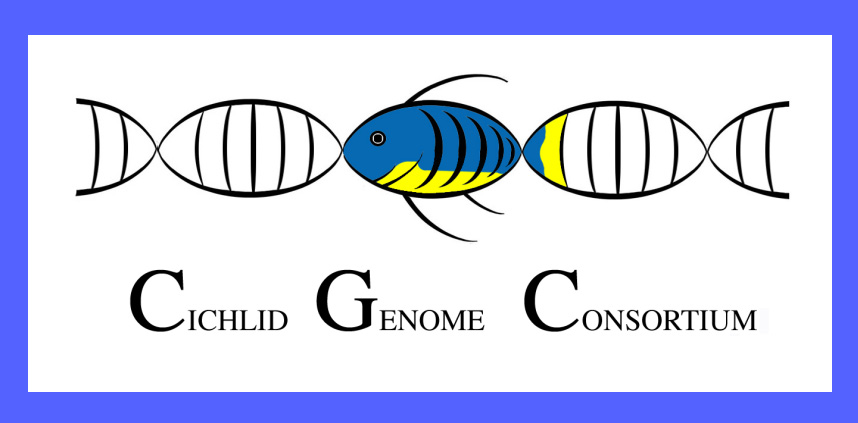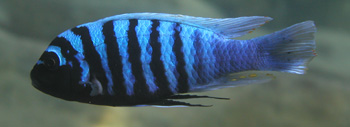| We work on visual communication in cichlid fishes of the Great Lakes of Africa. Cichlids are
well known for their rapid rates of speciation. In each of the lakes, Victoria, Tanganyika and Malawi, a cichlid flock has arisen
comprised of several hundred species. These species have arisen over recent evolutionary time scales and therefore have some
of the fastest known rates of vertebrate speciation. The replicate species flocks which have evolved in each of these lakes also
gives us a unique vantage point to look at how the speciation experiment turns out with each replication (photos kindley provided and
copyrighted by Ad Konings and Justin Marshall). |

|

| These three lakes also provide different habitats where cichlids can evolve. Lakes Malawi and Tanganyika are clear, while Lake Victoria
and the rivers are more murky. Here an image from the SeaWIFs satellite shows the differences in water properties between the different lakes.
Water transmission (K at 490 nm) is colored from blue (clear) to red (murky). This gives us a unique perspective on how habitat shapes speciation and visual
communication. |
| We are part of the Cichlid Genome Consortium and contribute to the growing genomic resources available for cichlid fishes. These tools
give us opportunties for new experiments and make cichlids an exciting model which complements other model systems in unique ways. The
tilapia genome is currently in the queue at the Broad Institute. |

|




